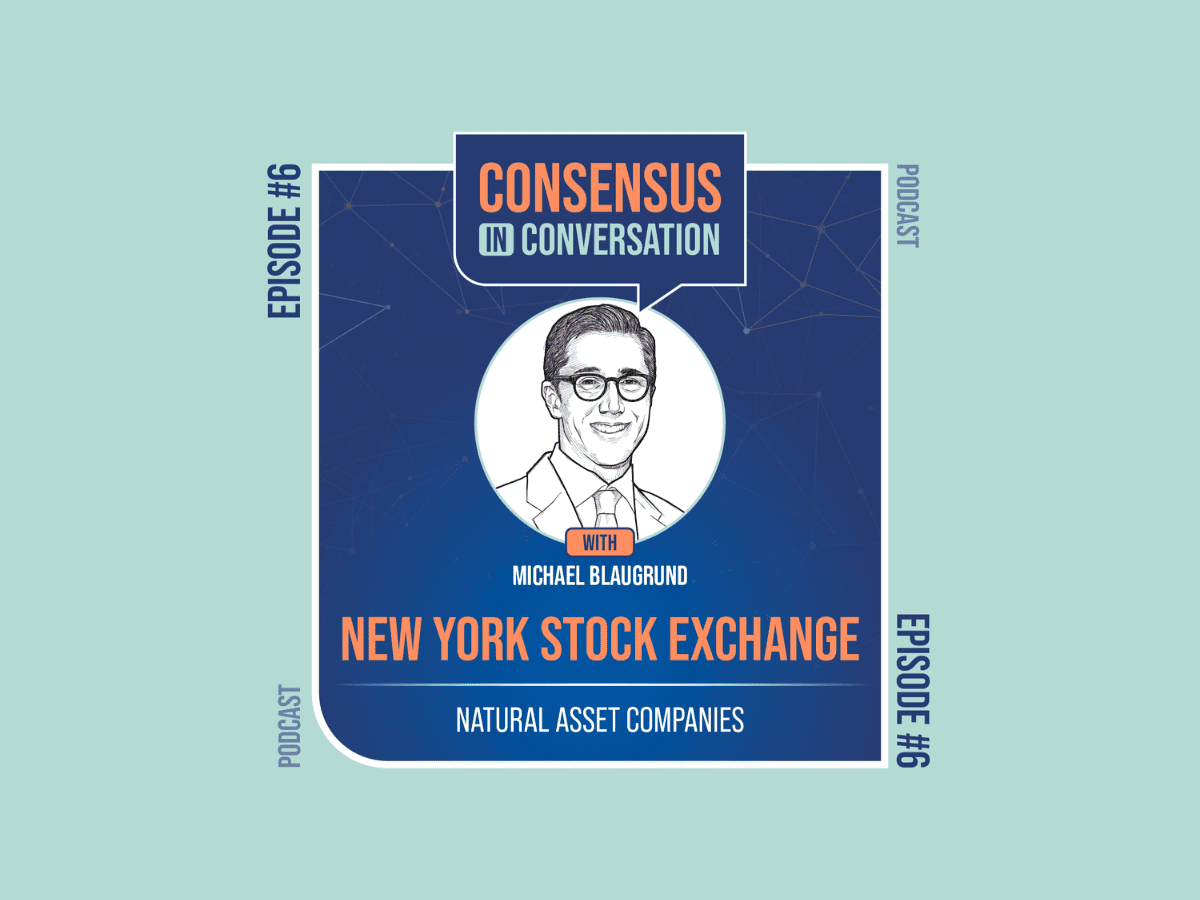New York Stock Exchange: Natural Asset Companies
The top perk of a podcast is the exciting conversations. And it doesn’t get any better than scheduling those conversations with friends. Recording with my good friend Michael Blaugrund, the New York Stock Exchange’s (NYSE) Chief Operating Officer, was awesome. We’ve had many deep and stimulating conversations over the years; this time, we simply hit record and started going on the capital markets, a topic we are both passionate about. We covered the ESG landscape and the capital market’s potential for good, but I was most fascinated by the NYSE’s newest creative innovation – Natural Asset Companies (NACs).
Hot Take: NACs are a revolutionary idea. For the first time, we are ascribing a market value to the natural world and the resources and assets in the ecosystem around us. This new asset classification applies to corporations with the rights to “ecosystem services.” These systems have always held immense monetary value, but it has always been hard to calculate. As a result, businesses have a long history of ignoring this inherent worth, reducing nature to an extractable resource. With NACs, the NYSE hopes to change this perception by revealing ecosystem services’ investing potential as a publicly traded equity.
Here are a few of my most important takeaways from the conversation:
- Our Natural Resources Are Worth Hundreds Of Trillions Of Dollars Annually! It is hard for us to truly appreciate numbers so big. But for comparison, the ENTIRE global annual GDP is $100 trillion. We are extracting a lot from the land. And, so we will need massively scalable solutions to heal and conserve the planet. Money may not be able to buy happiness, but it can fund initiatives designed to improve our quality of life. Many of the world’s most significant challenges are interrelated and complex. We need sophisticated technological innovations to solve them, and these ideas have a gigantic price tag. Solving the challenges of carbon pollution and conservation of biodiversity depend on creating a sustainable economy, interconnected with one another and countless other social, economic, and cultural realities.
- The Capital Market Is Key to Solutions at Scale: Philanthropy has been the traditional source of seed funding for sustainable programs; government can further incentivize innovation. But, capital markets are the only force large and powerful enough to close this funding gap. In the podcast, Michael estimated that billions of dollars would be needed to finance a more sustainable future, and markets are uniquely positioned to solve capital needs at that scale. Here are some quick statistics that helped me grasp the true size and scope of the free market. Every day, around 10 billion shares are traded worldwide on JUST the NYSE, the world’s largest stock exchange. This institution has an incredibly sophisticated technological system. The busiest day in the history of the NYSE occurred this year, with the system having to process 500 billion messages accurately and rapidly. That is greater than Google’s workload by several orders of magnitude. Imagine the power that even a fraction of this activity could have if geared toward funding the protection and conservation of our environment.
- NACs Will Unlock The Market’s Power: Concepts like carbon and biodiversity credits allow creative business and financial thinkers to be compensated for their work while making their businesses more attractive to investors. This requires a forum for promotion and trading. With ecosystem services growing value of around $100-150 trillion a year, environmental initiatives can demand the attention of these investors, and entrepreneurs, all to wisely allocate capital to help the planet. I’ve maintained that gaining wealth and promoting good seem to coincide, motivating mutually beneficial work.
- The Market Is Naturally Oriented Towards Good: ESG has gained momentum. This space has become increasingly politicized, with prominent public and private forces supporting and criticizing the trend. Ironically, some critics believe that the way to a free market is to ban a market-motivated behavior or trend. Organizations like the NYSE are seen to be taking a more hands-off approach. Punishing non-compliant companies for not achieving an arbitrary quota seems counterproductive to the NYSE’s goals. The exchange would rather spend their energy providing the necessary tools to help firms become more environmentally and socially sustainable. Ultimately, listed companies, as well as funds and investors, get to decide then how they will consider ESG. But let’s be clear – investors are increasingly prioritizing these factors.





